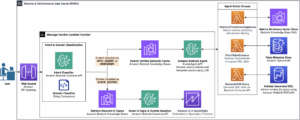In an increasingly interconnected environment, achieving a balance between personal privacy and shared space has become a crucial priority for many individuals. This need has become particularly evident in the era of remote work and multifunctional living, leading to a rethinking of the distribution of interior spaces.
Dividing spaces to improve privacy does not always require large investments or complex renovations. Instead, many people have opted to implement creative and accessible strategies that allow for a satisfactory level of privacy. A popular method is the use of screens or movable dividers. These elements not only serve the function of visually dividing an area, but can also be easily added or removed, according to the moment’s needs.
Another strategy that has become popular is the use of shelves, whether open or closed, that serve as separators and also provide additional storage space. This approach allows for efficient space management while providing a certain degree of intimacy.
For those with an eye for design, curtains can offer both a practical and aesthetic solution. Installing floor-to-ceiling curtains can help create small “rooms” within the same space, providing visual and acoustic isolation. Additionally, curtains can add a decorative element by allowing for playing with textures and colors, without altering the structure of the place.
In a more architectural context, glass walls with steel or wooden frames have become popular in modernist-style offices and apartments. They offer natural light and a sense of spaciousness, while also serving as visual barriers that delineate different areas.
On the other hand, furniture arrangement is key. Placing sofas, tables, or desks strategically helps define specific areas without the need for structural changes. Additionally, using different rugs in each section is a subtle but effective way of demarcation.
Implementing these solutions requires a balance between functionality and aesthetics, always considering the specific needs of each home or office. The key is to find the right balance between the dynamism of the space and the desired level of privacy.
With the advancement of modern life, the need for versatile and private spaces continues to increase. Adapting environments to these new demands not only improves quality of life, but also optimizes the use of available space, turning every corner into a more comfortable and functional place.
Referrer: MiMub in Spanish












